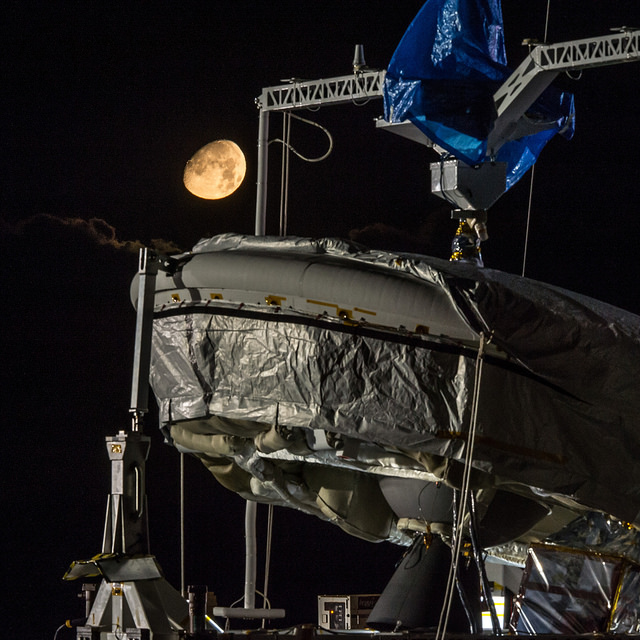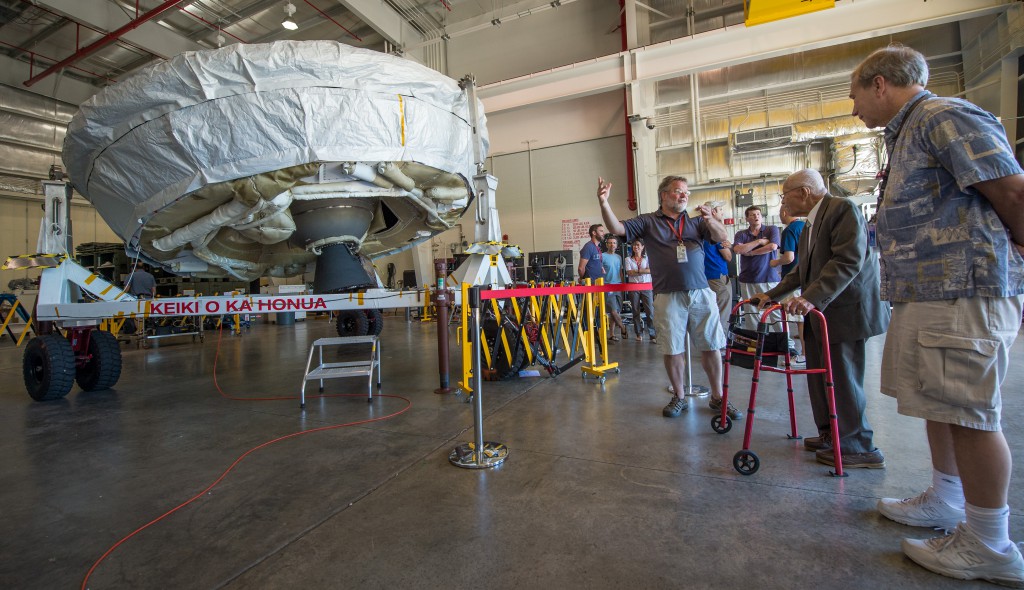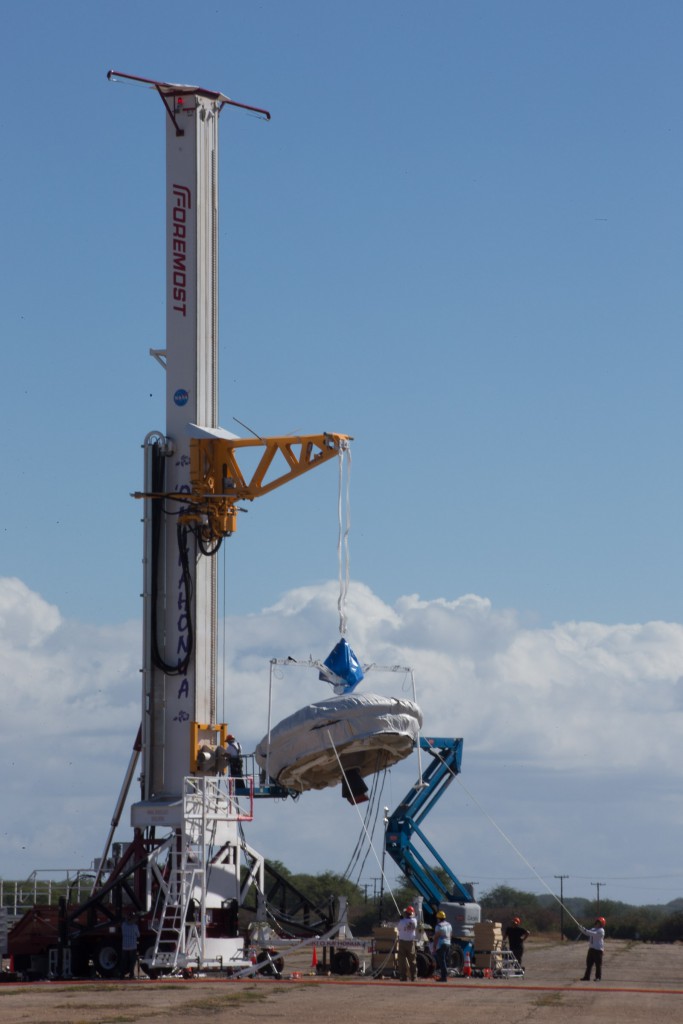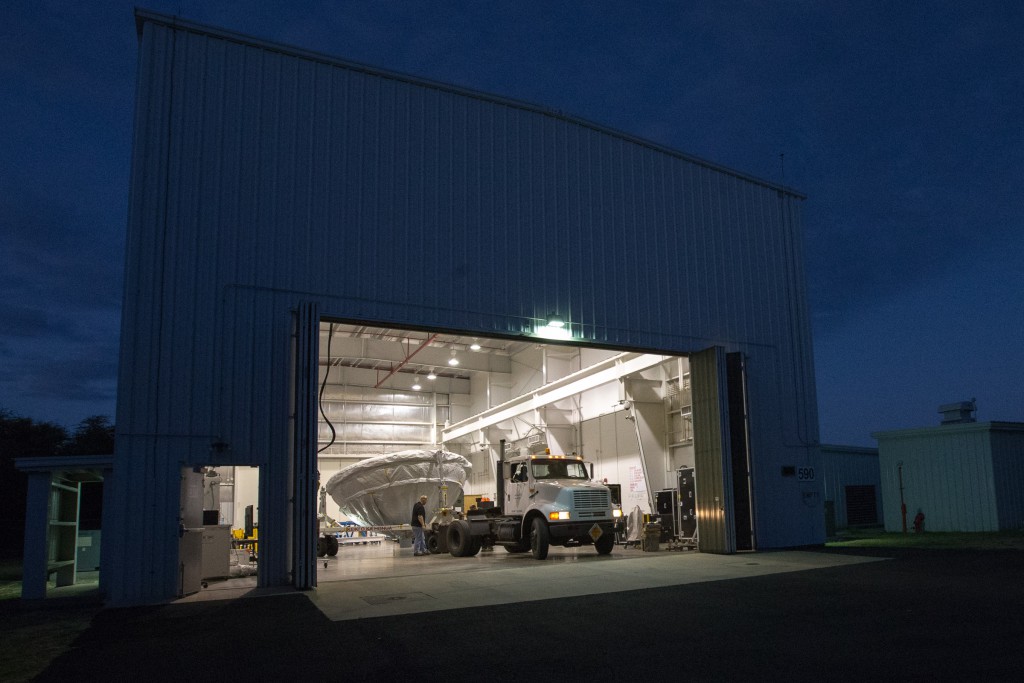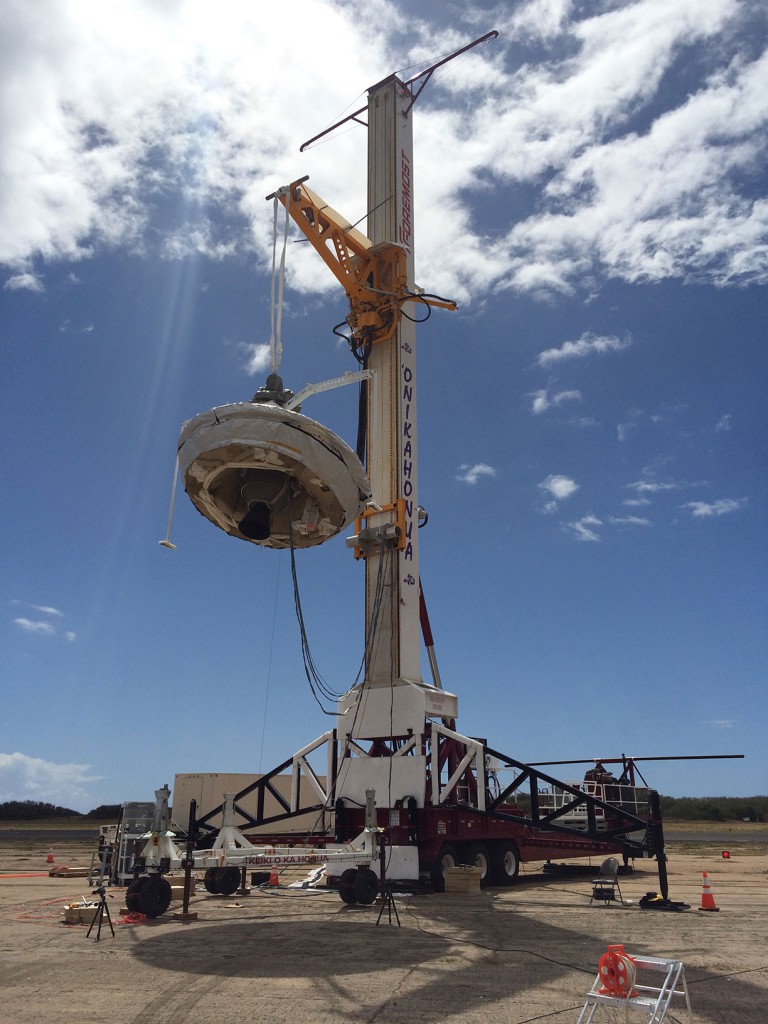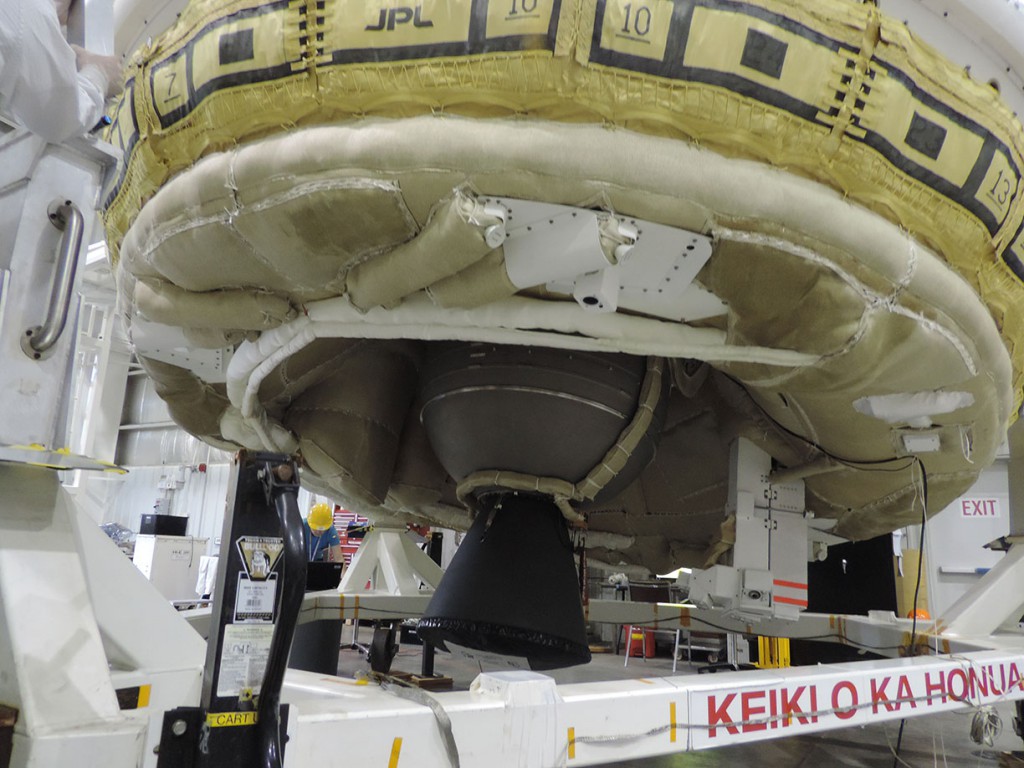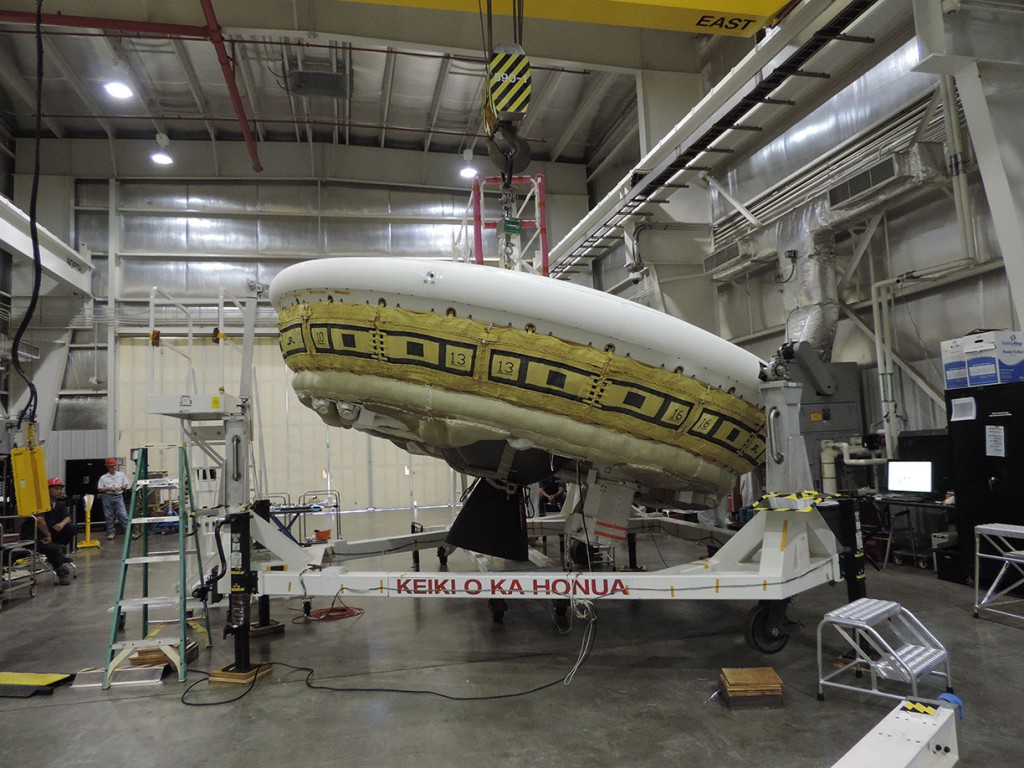NASA’s Low Density Supersonic Decelerator (LDSD) test flight, carried aloft by a high altitude balloon, has been cleared for launch tomorrow, Thursday, June 4. The balloon launch will occur no earlier than 1:30 p.m. EDT, 7:30 a.m. HST.
NASA Television and JPL’s Ustream channel will carry live coverage of the launch activities beginning at 7 a.m. HST, 1 p.m. EDT. Launch commentary will begin 30 minutes prior to launch.
The balloon may take two to three hours to reach its float altitude of 120,000 feet. After the balloon reaches test altitude, the saucer-shaped LDSD test vehicle will be dropped and its powered flight will begin.
A fraction of a second after dropping from the balloon, and a few feet below it, four small rocket motors will fire up to spin stabilize the saucer.
Just over two seconds later, a Star 48B long-nozzle, solid-fueled rocket engine will kick in with 17,500 pounds of thrust, sending the test vehicle to the edge of the stratosphere, or about 180,000 feet, at a speed of Mach 4. Shortly after reaching solid rocket motor burn out, four additional small rocket motors will fire up to de-spin the saucer.
At about Mach 3, the test vehicle will deploy the supersonic inflatable aerodynamic decelerator (SIAD). The SIAD decelerates the vehicle to approximately Mach 2.4. The test vehicle will then deploy a large supersonic ringsail parachute, which will further slow the test vehicle to a controlled water impact landing about 40 minutes after being dropped from the balloon.
The LDSD crosscutting technology demonstration mission will test two breakthrough technologies that will enable larger payloads to be landed safely on the surface of Mars or other planetary bodies with atmospheres, including Earth.
To learn more about LDSD.

